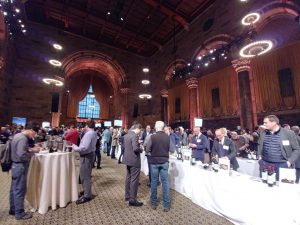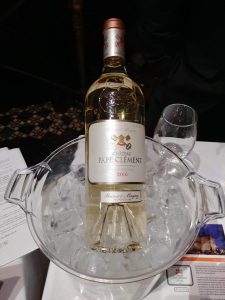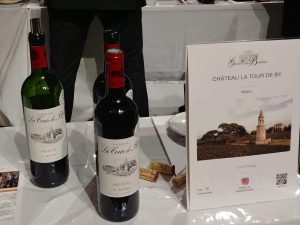
January. A new year. A new wine tasting season for media, trade and wine consumer alike. Just as Alcoa once kicked off every earnings season ( for those who follow the stock market ) so too did the Union des Grands Crus of Bordeaux lead the way, debuting their 2016 vintage in grand style at Cipriani in Midtown.

The Union des Grands Crus comprise 135 chateaux, many of which have centuries of winemaking history behind them and much still to come. This has helped Bordeaux develop and sustain an enduring global reputation of wine excellence. Bordeaux’s cultivation of its wine making history and culture has also enabled their venerable vineyards to evolve and create wines that suit different palates depending on the era while upholding strict standards of excellence in winemaking. In 2016, the city of Bordeaux reaffirmed its identity as a ” wine capital ” with the construction of the Cite’ du Vin at the Port of Bordeaux. The structure pays homage to the important role the port played in the wine industry. The city will also be holding its third annual four day Wine Festival along the Garonne River.
Bordeaux is known for its red blends of Cabernet Sauvignon and Merlot but the region also makes white blends of Sauvignon Blanc, Semillon and Muscadelle.
The appellation of Pessac Leognan or Graves in the Left Bank showcased a number of fine whites at the tasting. The region is known for not only its whites and reds, but also its sweet wines. Graves holds the distinction of identifying its name with its soil variety ( graves or gravel ). Wine grapes thrive in this soil that is otherwise to rocky to cultivate anything else successfully. Several chateaux within the Pessac Leognan or Graves poured their white blends for review at the tasting.

Chateau Olivier received its AOC classification in 1953 for its reds and subsequently, in 1959, for its white wines. Its white blend of Sauvignon Blanc and Semillon was crisp, with balanced acidity and papaya, pineapple and honey notes.

The 2010 white blend of Sauvignon Blanc, Semillon, Sauvignon Gris and Muscadelle by Chateau Pape Cle’ment was lively and fresh, with notes of grapefruit, lemon zest and white flowers.

Chateau Smith Haut Lafitte presented a refreshing 2009 white blend of Sauvignon Blanc, Sauvignon Gris and Semillon with floral aromas, bright green apple, citrus and vanilla notes and soft acidity.
A number of areas within the appellation of Medoc on the Left Bank presented a number of notable red blends. The region is distinguished by the recognition of all their vineyards within the 1855 classification of Bordeaux wines.

The 500 hundred year-old Chateau Tour de By presented a well rounded blend of Cabernet Sauvignon, Merlot, and Petit Verdot with fresh berry and cherry aromas, ripe dark fruit notes and a soft finish.
The appellation of Margaux is recognized as one of Bordeaux’s foremost winemaking areas and given this distinction it was not surprising to discover several expertly crafted bottles on offer from the area’s prestigious collection of chateaux.

The 2009 blend of Cabernet Sauvignon, Merlot, Cabernet Franc and Carmenere from Chateau Brane Cantenac was rich and complex with aromas of cherries and fresh herbs, lush notes of ripe raspberries and blueberries and chocolate, and a smooth finish.
The 2010 blend by Chateau Cantenac Brown comprising Cabernet Sauvignon, Merlot and Cabernet Franc exhibited sweet cherry and plum aromas, dark berry and candied fruit notes and a velvety finish.
The 2012 blend of Cabernet Sauvignon, Merlot and Petit Verdot presented by Chateau Prieure’ Lichine was full of earthy and cherry aromas, ripe plum and vanilla notes and well rounded tannins.

Be First to Comment